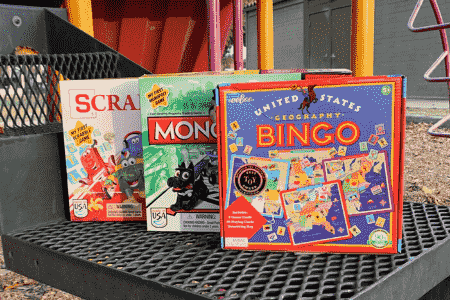As the leaves turn and the cool breeze sets in, fall brings a season of cozy gatherings and family fun. It’s also the time when holiday spending starts to creep in, with Halloween and Thanksgiving just around the corner. But don’t worry – this season is also a great time to teach your kids some valuable money lessons through fun fall activities, all while keeping your budget on track. Here are a few creative ways to help kids of all ages learn about money!
For Young Kids (Ages 3-7)
Fall is such a magical time for young children, with pumpkin patches and costume parades filling their imaginations. It’s also a great time to introduce them to basic money concepts in a playful, hands-on way.
Try creating a “leaf store” where they can use leaves as pretend money to ‘buy’ toys or snacks. This is a fun, visual way to start teaching the idea of exchanging money for goods.
You could also set up a fall-themed savings jar, where they can stash coins to save up for a special Halloween treat, like a small toy or extra candy. This helps show the importance of saving for something special – and they’ll love watching their jar fill up!
For Tweens (Ages 8-12)
Tweens are ready for more responsibility, and fall offers plenty of chances for hands-on learning. If your family celebrates Halloween, let them help budget for costumes and decorations. Give them a set amount of money and challenge them to get creative – maybe they’ll make their own DIY costume or hunt for bargains at a thrift store.
Another idea is to encourage them to start earning their own money. Whether it’s doing extra chores or helping neighbors with fall yard work, they can save up for holiday gifts or something fun they’ve had their eye on. It’s a great way for them to learn the value of hard work and saving.
For Teens (Ages 13+)
As teens get older, the financial lessons become even more important. Fall is a great time to introduce them to budgeting – especially with gift-giving season approaching. Encourage your teen to set aside part of their allowance or earnings to cover holiday spending. This teaches them not only how to budget but also how to give thoughtfully without overspending.
You could also talk to them about more advanced money topics, like managing a savings account or debit card. Show them how to track their spending on fun fall activities like pumpkin carving or movie nights, and how to plan ahead for bigger expenses.
Fall on a Budget for the Whole Family
There are plenty of ways to enjoy fall family time without splurging! Instead of throwing an elaborate Halloween party, consider a neighborhood potluck where everyone pitches in with a dish. For Thanksgiving, why not gather the family for some quality kitchen time to make delicious homemade dishes that won’t break the bank?
You can also plan budget-friendly fall activities like nature walks to take in the beautiful colors, or get crafty with DIY projects using inexpensive materials. In the spirit of Thanksgiving, encourage your kids to help pick out items to donate to a local charity or food bank – teaching them that giving back is priceless.
Remember, the most meaningful moments don’t have to cost a lot. This fall, focus on spending time with loved ones and creating memories – those are the things that truly matter.
This column is sponsored by Bay Federal Credit Union







